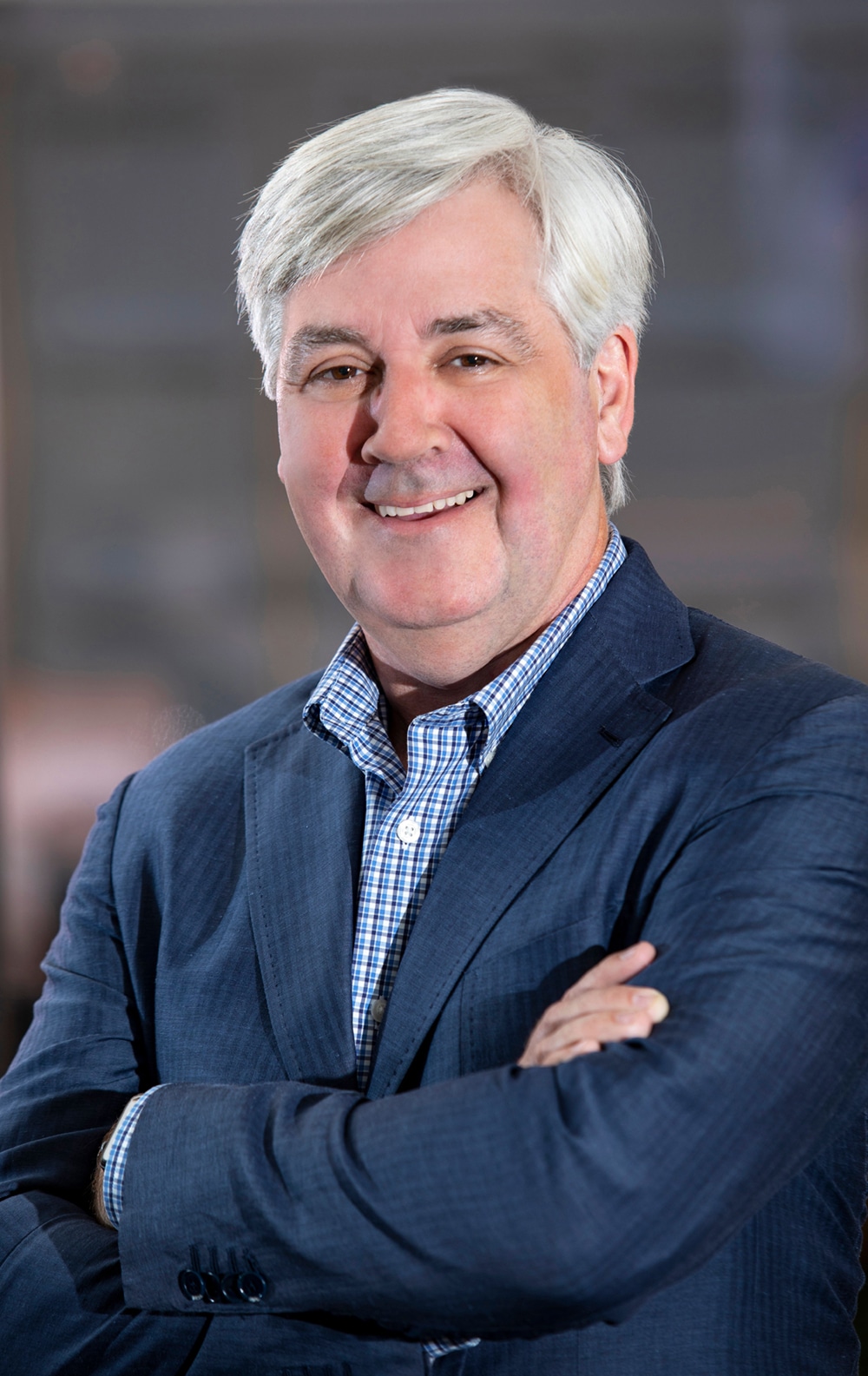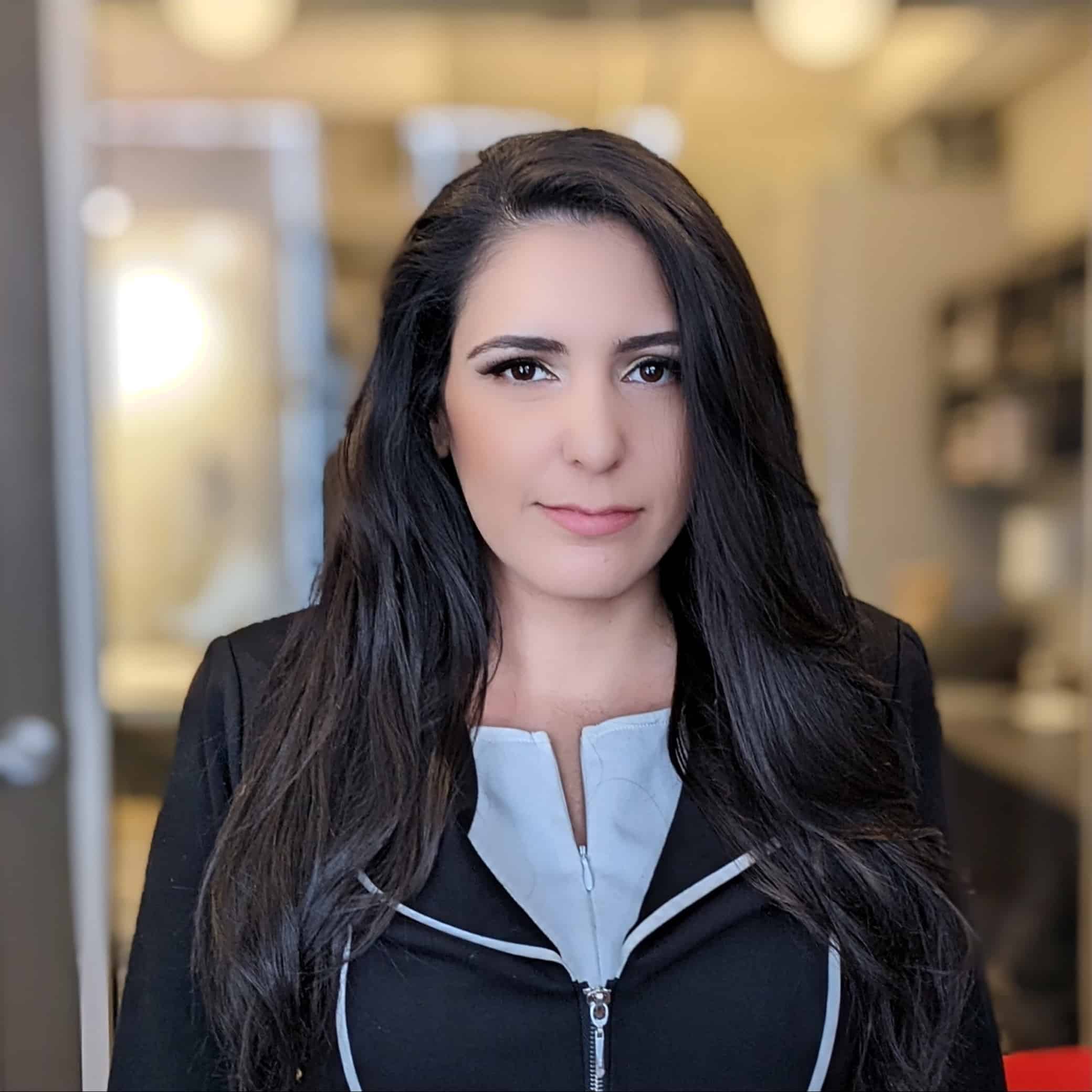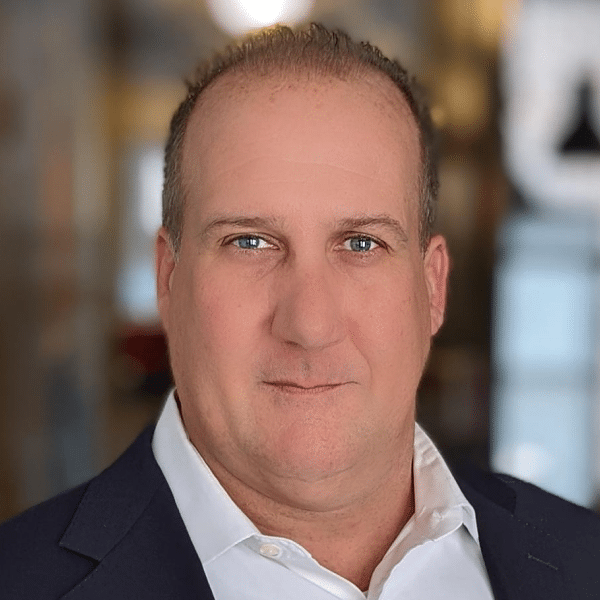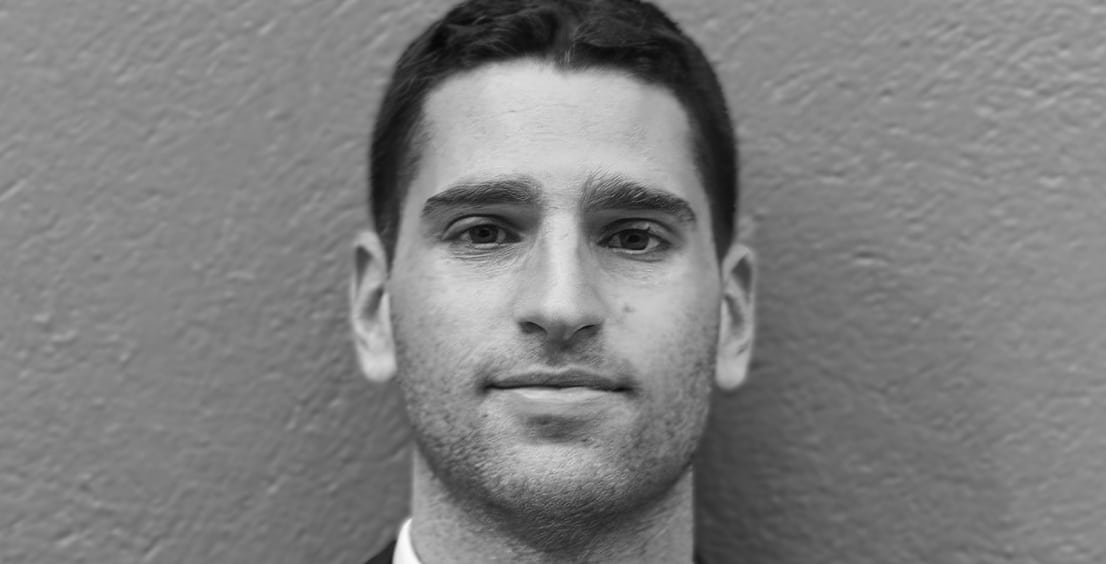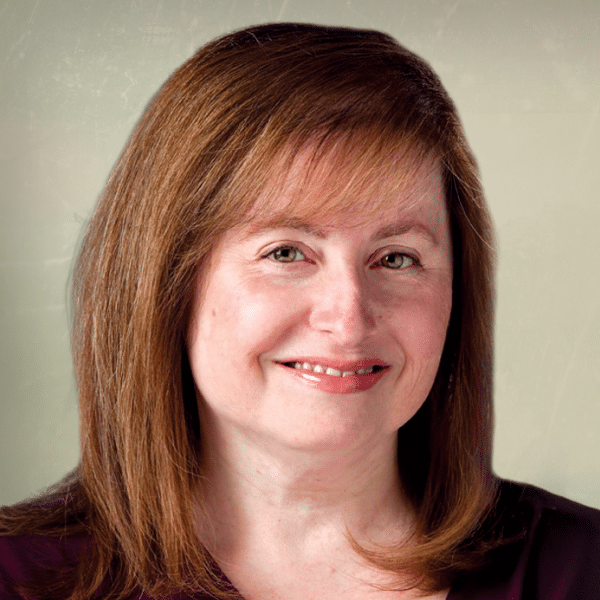Real-Life Lessons In Digital Transformation
Len Gilbert
EVP & Head of Strategic Consulting at Mod Op
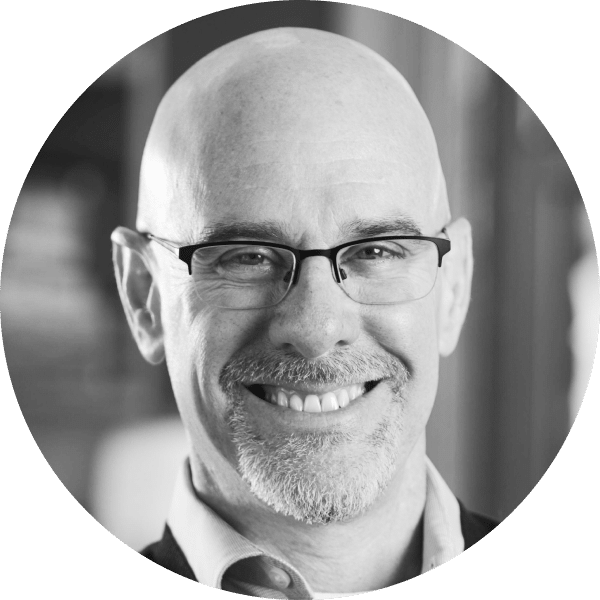
In this episode, Len Gilbert and Tessa Burg discuss the human side of digital transformation. They highlight the importance of using technology to improve customer experience.
Len opens up with a personal story about his father’s recent health emergency and how it shed light on the positive impact of technology in healthcare. He introduces us to the ‘hospital at home’ program, which not only helped his father recover faster but also illustrates the potential of tech-driven care. This story isn’t just interesting; it offers a practical guide for any industry looking to succeed with digital transformation.
“It was amazing to watch and see, at a very personal level, what a well-run digital transformation can do to improve the lives of all the stakeholders.”
As the conversation shifts from Len’s story to broader business strategies, the focus remains on customer experience as the key to getting digital transformation right. Marketing leaders will find this episode rich with practical tips on choosing the right technology to meet customer needs.
Highlights From This Episode:
- Digital transformation
- Healthcare innovation
- Customer experience focused solutions
- Technology implementation
- Organizational change management
- Pilot programs and feedback loops
- Performance metrics
- Leadership and employee engagement
Watch the Live Recording
Tessa Burg: Hello, and welcome to another episode of Leader Generation, brought to you by Mod Op. I’m your host, Tessa Burg, and today I am joined by Len Gilbert. He is our EVP of Strategic Consulting here at Mod Op. Len, thanks for joining us today.
Len Gilbert: Pleasure to be here.
Tessa Burg: So we were just talking before we started recording that it is a challenge that every business faces in helping to make technical or large project information really accessible. And we see this all the time. When you have a big moon shoot project, you’re trying to move into more AI, ML, and there’s so many different components and there’s so many things that people can see blocking it. Sometimes it’s hard to see even where to start, but there’s a lot of power in storytelling and using stories as a way to make projects more accessible, to make technical information easier to understand. And that’s what we’re gonna delve in today. So I am, I think this is a subject that’s universal, whether you’re trying to do a super technical project or even changing a process within your business, storytelling is a powerful tool. So, we appreciate you being here to help us unpack this topic.
Len Gilbert: Sounds great.
Tessa Burg: So you recently had quite an ordeal, a health issue with your family, which is where our story comes from. Before we jump into that though, tell us a little bit more about your role here at Mod Op and what the Strategic Consulting unit does.
Len Gilbert: Sure thing. So the strategic consulting unit is fairly new at Mod Op, and what we do is focus on helping our clients figure out how to use technology to drive growth. So even though I put technology in the beginning, it’s really not about the technology. It’s about understanding where you’re trying to go, what digital capabilities you might need to get there, and then how to accomplish what you’re trying to do. And we’re pretty good. You know, we have a lot of strong practitioners who 20 years of experience doing this at companies, very similar to our clients. And I think we do a nice job of helping them figure out in this incredibly fast-changing technology world, how to use some of those capabilities to improve their business, improve their customer experience, and improve their internal operations as well.
Tessa Burg: Yeah, I agree. I feel like a lot of clients are now just realizing what digital transformation is. I mean, it’s been around for a very long time, but with cookies going away and people better understanding what it means to need, to have to have a first-party data strategy and what the benefits of that will be moving forward as the landscape has been completely flipped on its head in combination with growth and rapid development, AI and ML, you know, it’s more important than ever to start with a really sound data strategy and process.
Len Gilbert: Yep.
Tessa Burg: so we’re excited that, to get into this story, Len sent us a message after having quite a week and a personal ordeal and saying, “You know what though, this helped me better understand where we can continue to help clients access and plan out their own digital transformation journeys.” So, Len, tell us about what happened and what were your learnings coming out of it.
Len Gilbert: Will do. So yeah, my father who’s 85 years old and had been relatively independent, you know, living at home, living with my mom suddenly was rushed to the hospital and he was falling over. We had no idea what the issue was, you know, rushed to the emergency room. And it turns out that he had a pretty serious infection, actually, more serious probably than we knew that day. And so I kind of rushed home and spent the next week there, first visiting him in the hospital and then with him at home in this very innovative program that even as I was, you know, worried about my dad and trying to navigate, you know, the day-to-day situation, the consultant side of me couldn’t turn off. And I was watching this thing that I’m gonna describe saying, “Wow, this is really digital transformation at its best and it’s being done at a hospital.” And I don’t know about you, but I don’t think of hospitals as a place that generally can do an innovative digital transformation quickly. And yet that’s exactly what they were able to do. And it was really kind of amazing to watch it and see at a very personal level what a digital transform, what a well-run digital transformation can do to improve the lives of all of the stakeholders. So basically what happened was he had been in the hospital for about three days and was going crazy because as you know, a hospital is not actually a great place to recover from anything. The lights are always on. You can’t leave your bed without permission. It’s loud, you know, all those things. But he was getting an intravenous drug infusion on a twice-a-day basis, and that’s traditionally meant that you needed to be in a hospital. But they basically, they came to us on that and in the morning of the third day and said, “Hey, we’ve got this new program, it’s called Hospital at Home, and you know, if your dad qualifies, we will take him home in an ambulance. And we have all this technology that we’ll put in the house, and then basically we can do everything we were doing in the hospital, but he can do it at home.” And obviously we jumped at that because everything I’ve read about being in a hospital, A, there’s a bigger chance of getting an infection. But more importantly, it takes three or four days to recover from each day you’re in a hospital because you’re not moving around, you’re not, you know, in your natural space. And, you know, most 85 year olds, they’re not great at change. He wants to be in his house. He wants no part of being in this new environment. So one of the first things that was amazing was just how quickly this program came together. We didn’t know about it when we showed up in the hospital on the third day, by six o’clock that night, my dad was at home, you know, having been brought by an ambulance. All the technology was in place in our house and the, you know, the program had started. So it went from literally us not knowing it existed to, we’re in the middle of it in less than 12 hours. Again, not what I think of a hospital as being good at. And what the program was, you know, it’s called Hospital at Home, it was a pilot and it’s exactly what you would think. The goal is to let people who are sick, sick enough that they need a hospital, they need some of what a hospital has, but well enough that they could actually do it at home. They don’t need 24/7, you know, people watching them. And this program was a really interesting combination of things. You’ve got, you know, the hospital, you’ve got insurance providers, you’ve got a technology provider, and you’ve got patients and then the family of patients. So I think of those as all kind of stakeholders in this pilot all working together to do something that’s actually good for all of the stakeholders. It’s, you know, to me it was a real game changer. And at the end of the day, because of this program, my dad was able to cut a hospital stay, that would’ve been eight or nine days down to three. And I think that was better for the hospital as well, right? They had a room freed up. It was better for the insurance provider. It probably cost less having him at home than if he was in the hospital. And certainly better for the patient.
Tessa Burg: One thing that really strikes me is the problem you described of, you know, patients want to go home is really universal and it actually feels like when you’re on the other side, I was the primary caretaker for my grandmother. And so when I was on the other side with her, it felt like the hospital was working against that. And I had a similar experience. I could see her depleting, I could see her getting more sad because she couldn’t go outside and take her morning walk. She couldn’t say hello to her neighbors. All those small things that get anyone up and moving.
Len Gilbert: You can’t sleep. I mean, someone’s coming in every 90 minutes or in every hour to do something. It’s a very difficult environment.
Tessa Burg: Yes, and I feel if we look at, I’m interested to get more into the program, but I do see when we take, when clients, and I’m almost referencing when I was on the client’s side, I was a part of a large digital transformation project and it was that beginning part where we really had to center on the why we’re doing it. And there tended to be a lot of, I guess, motivation in to lean into the internal business reasons. And in the story you just told, this solution did an awesome job of leaning into the customer’s or the patient’s primary problem. I mean, I don’t think anyone working in a hospital doesn’t hear from a patient that they want to leave. Like sometimes I felt like my grandma was about to break out and, but it still was a win-win. And I just, that really caught me. I’m like, that’s awesome that instead of it being bogged down by all these internal reasons and internal business wins, which is important obviously, especially if you have a board and we all that, but they were able to create that win-win being so customer-centric.
Len Gilbert: They, yeah, they were completely focused on the patient. I think that was what the start of the program must have been, was how do we, you know, optimize it for the patient. But in this case, the key metrics actually, I think worked for everybody. Because the hospital wants to have more beds available for people who need them. The insurance company wants to pay less money. And actually the people to me are the most important part. We worked with 10 or 15 different people in this program. Every single one of them seemed like they were really kind of excited to be part of a program that was making patients’ lives better. You know, a lot of the EMTs that we worked with, because they actually had EMTs come to the house twice a day to do any drug administering. And a lot of them, you know, I talked to them to ask why they were in this program, ’cause I can’t help it, I’m a geek. I wanna understand what, you know, what the rationale was. They all said they joined it because they were burned out in their previous roles. And this was something that they could be excited about because they were actually, you know, making patients’ lives better and they could see the improvement. And they got, you know, an EMT normally is working with somebody for, you know, the worst hour of their life and then they’re gone. In this case, the same EMT would come back, you know, multiple times over the course of a week and get to know the patients a little bit. And I think they enjoyed that. And especially if you’re doing an infusion, that takes an hour, so you’re actually spending a lot of time with these people. We got to know them all by name. We understood what their likes and dislikes were, and they got to know my dad and know the family. So it was a cool thing. But to your point, I think everyone was aligned on the customer journey and what the goal was. And in fact, I think the program’s main goal, because I asked the people, the main goal was, they wanted to make, they wanted to monitor how often these patients needed to go back to the hospital. That was a failure, right? If you put someone in this program and they end up back in the hospital in four days because of something, then this program didn’t work. It means they were either chosen wrong or something happened during the course of treatment. And they were really aligned on that. And it was a cool thing to see. It was a great combination of, to me, all of these digital transformations are a combination of people, process and technology. And one of the biggest mistakes is most people will say technology first. It’s not technology first, it’s people first and being aligned on what it is you’re trying to do, what problems you’re trying to solve. And then it’s changing the processes, which had to be completely changed, right? So, you know, everyone knows what the processes are in a hospital environment, but how do you have to change those processes when, you know, someone is remotely administering drugs? It’s very different. And they created this whole new process where I watched, you know, they would have a tablet so that there was constant communication between the nurses at the hospital and the EMT who was at our house. And they had a whole process they had worked out, the drugs would be read every time, you know, what needed to be administered in what amount. And then the EMT had to echo it and then take a picture to show what had happened. So they had built a whole new process for how to treat a patient in, you know, in a situation where any mistake could be fatal, and it was, it was really impressive to see how they had changed those processes and refined them and made them work in this new environment. And then the technology’s super important, but you can’t pick the technology and develop the technology until you understand, until the people are aligned on what they’re trying to do. And then the process is aligned on how you’re trying to do it, then you pick the technology or build the technology that lets you accomplish that. And this was a great combination of those three things.
Tessa Burg: Yeah, and I think a lot of us get into our professions out of passion. And so when you start with that people component first and you show that alignment on the customer journey, also be in alignment against like why you got in this field in the first place. Like I know just as many engineers we’re super passionate about engineering and that’s why they’re there. And sometimes, not sometimes probably all the time when you start with a tech solution and then that’s when you get that disconnect. Well, this isn’t what I signed up for. I don’t know how this is gonna help or benefit what I’m doing. And then you start to get that confusion and it’s like, well, we have to do this because we have to meet this metric. But I totally agree, when you, if we find those intersections of people first, where are you passionate? You are in this profession, you’re at this company for a reason, and we all want, have these shared goals to be successful, let’s start there and then create that roadmap towards selecting a tech solution that then is a part of that digital transformation.
Len Gilbert: Figure out what you’re trying to solve, how you’re gonna solve it. Then find the technology or technologies that will let you accomplish that. If you do it backwards, then you’re gonna, the processes are gonna get screwed up and the people are not gonna be happy. And that is probably the single most common issue that we come across in our business is, you know, people who are picking the technology first and then they’re very limited in what they can do. And they, you’ll take shortcuts or you’ll skip things that you know should happen. And maybe there was another technology that would’ve made a lot more sense, but you didn’t do that work upfront to understand what is the customer journey, how, you know, how do you, what do you need to do? And then the process of how do you need to do it, then you plug the technology in. The good news is we live in an incredible time. There’s technology now to do almost anything. And it’s really a matter of having a deep understanding of what you need to do first and then going out and finding the technologies that will best support what you wanna do.
Tessa Burg: Yeah, I agree. What, for people who are listening and wondering, okay, I get that I have to start with the customer journey and start with the people. What are some tools that they can use to get started and maybe even starting the process out to get buy-in that, hey, this is how we should approach digital transformation. Because like I said at the beginning of the episode, I do see people being like, “We need a CDP, we gotta do that now. We should have done it.” Or, “We definitely need to start taking, putting data in our CRM more seriously.” So I do think with this changing landscape, people are rushing to tech first. How can we empower the marketers to kind of help get buy-in, buy-in on this people first, problem first approach?
Len Gilbert: Yeah, I think storytelling is a really important part of it, right? There are a lot of people, if you’re not a technologist and a technologist comes and starts talking to you in technology talk, you’re gonna tune it out. You’re not gonna listen, you’re not gonna care what’s happening. So to me, the key thing is base everything on the customers. What understanding the customer journeys, and what they’re trying to do is the single most important thing. If you don’t have a clear sense of what the transformation that you’re trying to undertake, what the goal is, then it won’t be successful. And what you described with, you know, we need a CDP, that’s not a goal that A CDP is a tool to do a bunch of things. So what do you need a CDP for? What are the reports that you’re trying to create now that you can’t? What is the information you need to understand about attribution or about optimizing creative? You know, if you start up there with those problems that you’re trying to overcome, then it’s a lot easier to say, okay, based on these four or five things, here’s what we need. So, we usually, we spend a lot of time at the beginning understanding customer journeys. We spend a lot of time actually talking to customers, prospects and stakeholders, internal stakeholders to really understand what the needs and the goals are before we do anything around a technology selection. So, and that ties into having a clear vision, having a clear mission and a roadmap of, you know, a rough roadmap of what you’re trying to accomplish. It doesn’t have to be completely laid out. And I usually, a roadmap is much clearer in the next six months, first two years, or three years from now. But that’s important. And then aligning people, process and technology, as I said, you know, making sure that those three things fit together is really important. I also think that iterating in a pilot environment is super important. And that means, you know, like for example, the experience that I was describing with my father, that was a pilot, you know, this is something that’s being run very iteratively. They’re learning as they go. Now, it’s a little tricky for them because they can’t be learning as they go in terms of how they administer medicine or anything like that. But it was clearly a very select group. And I think they were being very careful who they let into the program to make sure that, you know, that the program worked well. But we’re huge fans in setting up pilots and then iterating on those pilots and getting customer feedback to the pilot experience and having that then, having those inputs drive the next phase of the pilot. That’s super important.
Tessa Burg: That is a really important point because when you select technology for technology’s sake, and the salespeople are saying everything you wanna hear from a feature perspective that does not equate to the impact to the business. It sounds like it will, if we have these features, here’s what we can expect as the output, but it doesn’t. And when you do a pilot and you collect the hypothesis you have about how that process will evolve and change over time, you can get down to the actual metrics, the act that will impact the business. And one of the things I always find fascinating is it usually doesn’t require all the features you thought you needed. I remember I heard this stat that of any platform, most people only use 10% and it doesn’t mean that they should only be using 10%, it’s that they over feature to begin with. And they did not start with people in process. So now they’re only using 10% and the technology themselves over feature because they’re always, instead of solving problems, just adding features to close sales. So, I think it’s so important to be aware and to pilot, to not try and solve everything all at once and to create those hypothesis and questions within the pilot. What do we want to learn? What do we need to know in order to forecast impact to the business as we scale and grow out from the pilot phase?
Len Gilbert: Yep, and then having, you know, metrics that you’re following, that’s incredibly important. You know, so that this isn’t all based on people’s opinions. So, you know, customer satisfaction’s a big one. Efficiency can be another one. Product quality can be one, time to market. Like the, you know, there’s a million metrics out there, picking the two or three that you really care about and watching those metrics in a pilot and making sure that it’s going in the direction you want is really important. And you know, in the case that I’m describing before, their main, I’m sure cost was a metric, like it had to be cheaper than being in the hospital, but we all know how much hospitals cost. I don’t think that’s the hardest thing in the world. It was amazing to me that, you know, even having an EMT come twice a day and all this technology, I think it was still way cheaper to the company and the organizations than if, you know, he had stayed in the hospital. But I think that the main metric that they were following, which makes a ton of sense, is whether people are getting readmitted to the hospital. So figuring out what your metrics are for a pilot and then kind of relentlessly focusing on those metrics and talking to customers and iterating and watching it improve, that’s super important.
Tessa Burg: Yeah, I love that approach. I am jealous this program wasn’t available when my grandmother was still alive. She-
Len Gilbert: I’m hoping it becomes much more common. It just makes, it makes so much sense to every constituent, which is a rarity.
Tessa Burg: It absolutely does. I mean, she was readmitted to the hospital so many times that she got to know the EMTs, but on a different level. But one of them was someone I grew up with who has dimples and so she would never be sad to see ’em. She’s like, “Dimples came and picked me up today.” And it’s like, “Oh, Grandma.”
Len Gilbert: But it’s-
Tessa Burg: Well, and this program will never take the place of a hospital, right? It’s only for particular kinds of people. And frankly one of the negatives is it does take some of the work that the hospital used to do and put it on the family. I will say that the first 24 hours of this program were brutal for my mother and me because we just didn’t know how it was working. A lot of the things that a nurse would take care of, we were taking care of. I know way more about catheters now than I ever planned to. And my guess is there’s some learning there in the program to teach maybe a little bit more of that to onboard, you know, that kind of onboarding experience for the family. But it happened so quickly that there almost was an onboarding. I think someone told us the first day is going to be tough, but that’s not the same as actually experiencing it. But I would totally do it again. It was still, it was a tremendous program.
Len Gilbert: Well, and that again, speaks the importance of picking a problem people are passionate about to solve because training, validation, reinforcement is so important integral transformation projects. It puts, anytime you make a change, it’s gonna put more work on somebody else or at least everybody else while they get comfortable in learning this new process. And I think we were talking about right before the call, like sometimes it’s just eight, 10 minutes a day to sort of show, “Hey, here’s what’s gonna happen and here’s what you are going to need to do. And that is probably something you don’t know until you know, and here’s where you can get that support,” and just trickling that in along the process, I think is huge.
Tessa Burg: Yep.
Len Gilbert: I think sometimes when people start to get really discouraged with change, and especially when you’re launching new technology, it’s because they didn’t raise their hand soon enough. And it, you know, like this is where we needed support. And so to your point earlier, creating those feedback loops in the pilot is really important, ’cause you don’t know where people will get stuck. Sometimes you don’t even know where the time is gonna be transferred. So it’s important to make sure that you have those feedback loops in so you can provide that support. Well, and most people just underestimate the amount of time it’s going to take to, on the people’s side to get people bought in and keep them bought in. And it’s a combination, right? There’s an 80/20 rule here. Hopefully 80% of the people in any digital transformation will buy in eventually. 20% of ’em aren’t going to. And some of a digital transformation is figuring out who is comfortable making those changes and who aren’t. And that sounds negative, but there’s a positive spin to it as well. Every digital transformation I’ve ever been a part of, there have been people identified who are champions. And those champions aren’t necessarily at the executive level. There’s champions up and down a company who have been waiting for this for two years, you know, they’ve been dying for it to happen and you identify these people who become your future leaders who really throw themselves into a transformation because they see where it’s going and it play, you know, it’s part of a passion that they’ve felt or it fixes some problems they’ve felt. Identifying those champions early and giving them that career growth option is, I think, a really important part of any transformation.
Tessa Burg: Yeah, that is always an awesome positive that comes out of it, is giving the team that opportunity to rise to the occasion. Len, I think this has been a great conversation and thank you so much for sharing your story. If the listeners wanted to get in touch with you, ask more questions, how can they reach you?
Len Gilbert: Email or, I’m on LinkedIn. There’s, I think two Len Gilberts, I’m the one at Mod Op or [email protected]. Happy to answer any questions or engage in any way.
Tessa Burg: That is great, and for if anybody who wants to hear more episodes from Leader Generation, you can visit modop.com. That’s modop.com and click on Podcast.
Len Gilbert
EVP & Head of Strategic Consulting at Mod Op

Len Gilbert is the EVP and Head of Strategic Consulting at Mod Op. With more than 25 years of experience, he helps companies strategically use data and technology to innovate, grow, launch new products, stay competitive and future-proof their businesses against the risks of digital disruption. Len can be reached at [email protected].
